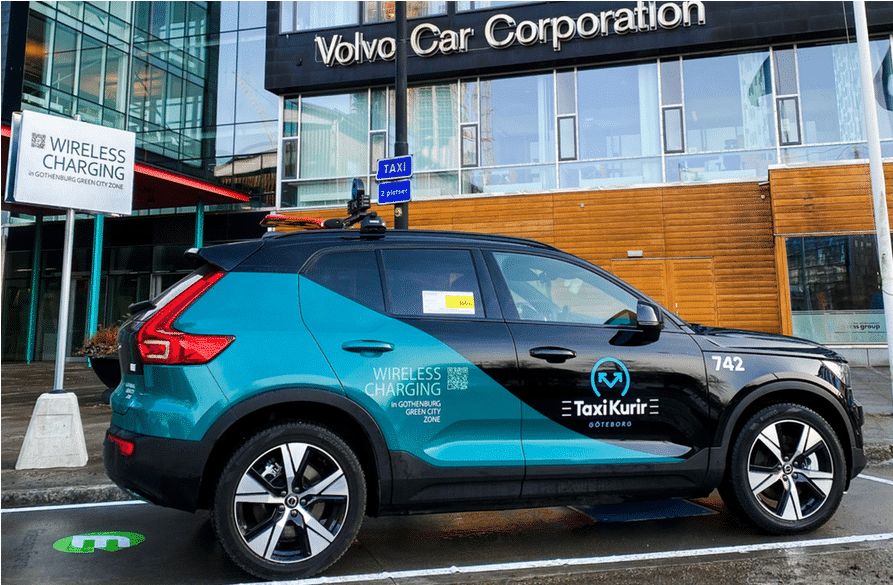Imagine a world where your electric vehicle (EV) charges seamlessly without the need for cumbersome cables. This futuristic scenario is fast becoming a reality with the advent of wireless EV charging. As cities around the globe aim to reduce their carbon footprint and promote sustainable mobility, wireless charging offers a convenient and efficient solution. According to a report by Bloomberg Green, the global wireless EV charging market is projected to surpass $234 million by 2025, paving the way for a new era in urban transport. In this article, we’ll explore how wireless EV charging works, its benefits, and why it’s set to revolutionize urban transport.
How Wireless EV Charging Works
Understanding the Technology Behind Wireless Charging
Wireless EV charging, also known as inductive charging, eliminates the need for physical connectors. Here’s how it works:
- Inductive Charging Pads: These are installed on the ground, either on streets or in parking spaces.
- Receiving Coil in the Vehicle: The vehicle must be equipped with a receiving coil that aligns with the charging pad.
- Magnetic Field: When the vehicle is parked above a charging pad, it generates a magnetic field.
- Energy Transfer: The magnetic field induces an electrical current in the receiving coil, charging the vehicle’s battery.
This technology, already in use in consumer electronics like smartphones, is now being scaled up for EVs, with companies like Hyundai and BMW leading the charge.
The Benefits of Wireless EV Charging
1. Convenience and Simplicity
Wireless charging eliminates the hassle of plugging in and out, offering a seamless experience. This is particularly beneficial in urban areas where space is limited, and drivers often struggle with tangled cables.
- Automated Process: Simply park your vehicle over the charging pad, and the system takes care of the rest.
- Reduced Wear and Tear: With no physical connectors, there’s less wear on charging ports and cables.
2. Enhanced Safety and Durability
Safety is a significant concern with conventional charging, especially in public spaces. Wireless charging addresses these issues effectively.
- Weather Resistant: No exposed cables mean reduced risk of electrical hazards during rain or snow.
- Durable Infrastructure: Charging pads are robust and less prone to damage over time.
3. Increased Urban Efficiency
Wireless charging can transform urban infrastructure by integrating into roads and parking lots, enhancing the overall efficiency of city transport systems.
- Dynamic Charging: As technology advances, dynamic charging on the move could become a reality, allowing vehicles to charge while driving, thus reducing downtime.
- Scalable Solutions: Easily scalable to meet the growing demands of urban transport networks.
Practical Value: Implementing Wireless Charging in Urban Areas
How to Install Wireless Charging Solutions
For cities and businesses considering wireless charging, here are some steps to follow:
- Assess Infrastructure Needs: Evaluate current parking and road layouts to determine suitable locations for charging pads.
- Choose the Right Technology: Partner with companies like WiTricity or Qualcomm Halo, which specialize in wireless charging systems.
- Pilot Projects: Start with pilot projects in high-traffic areas to assess feasibility and gather data for large-scale implementation.
Where to Buy Wireless Charging Systems
Several companies are at the forefront of wireless EV charging technology:
- WiTricity: Offers customizable wireless charging solutions for various vehicle types.
- Plugless Power: Provides aftermarket systems compatible with popular EV models like Tesla and Nissan Leaf.
- Momentum Dynamics: Focuses on high-power wireless charging suitable for commercial and public transport vehicles.
What to Compare When Choosing Wireless Charging
When evaluating wireless charging solutions, consider these factors:
- Charging Speed: Compare the power output and time required to fully charge different EV models.
- Compatibility: Ensure the system is compatible with various vehicle makes and models.
- Cost and ROI: Assess the initial setup cost against potential savings in maintenance and increased vehicle uptime.
Conclusion
Wireless EV charging is poised to revolutionize urban transport by offering a convenient, safe, and efficient alternative to traditional charging methods. As cities continue to grapple with pollution and traffic congestion, adopting this cutting-edge technology could be a game-changer for sustainable mobility. Are you ready to embrace the future of urban transport? Let us know in the comments below. As we look ahead, the integration of wireless charging with smart city initiatives promises an exciting evolution in how we power our journeys.

